#it was so visceral and cinematic and made me go through the 5 stages of grief
Explore tagged Tumblr posts
Text
I just watched "bridge mankind collapse" and I swear to god that shit just altered my brain chemistry forever regarding MadCom animations
#madness combat#madcom#easily one of my favorite madcom animations of all time bar none#i put off watching it for a week despite the praise because almost 25 mins is a big investment#but i'm so glad i eventually did#once i started watching i didn't look away#it was so visceral and cinematic and made me go through the 5 stages of grief#so many good details#chef's kiss
21 notes
·
View notes
Text
Cinema Variety’s Top 25 Favorite Films of the Decade
This past decade has been a monumental ten years for the state of cinema. To think that there were actually still video rental stores all around the country, to almost becoming nonexistent, is statement enough to show how vastly audiences have changed the way they consume media. Through much thought and careful deliberation, the following 25 films are my personal favorites of the decade and are what I think best represent all that indie, international and arthouse cinema had to offer over the past ten years. Honorable Mentions: Shame Green Room A Ghost Story The Lost City of Z Knight of Cups 20th Century Women Jackie Blade Runner 2049 The Lighthouse Ingrid Goes West A Hidden Life
#25 - Suspiria (2018) Dir. Luca Guadagnino
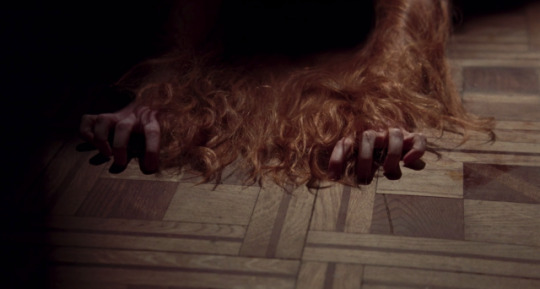
“It’s only hours afterward that Guadagnino’s film will cohere for you and yield its buried treasures: the bonds of secret sorority, the strength of a line of dancers moving like a single organism, the present rippling with the muscle memory of the past. It’s so good, it’s scary.”
#24 - Call Me By Your Name (2017) Dir. Luca Guadagnino
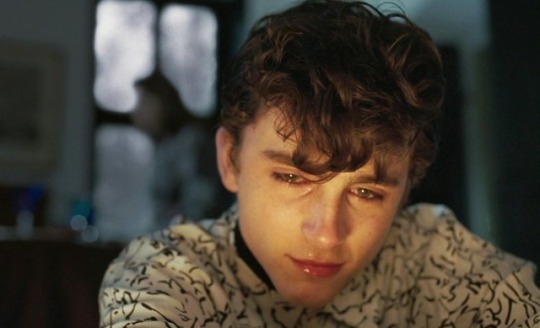
“The final beats of Guadagnino’s adaptation galvanize two hours of simmering uncertainty into a gut-wrenchingly wistful portrait of two people trying to find themselves before it’s too late.”
#23 - American Honey (2016) Dir. Andrea Arnold

“Part dreamy millennial picaresque, part distorted tapestry of Americana and part exquisitely illustrated iTunes musical, “Honey” daringly commits only to the loosest of narratives across its luxurious 162-minute running time. Yet it’s constantly, engrossingly active, spinning and sparking and exploding in cycles like a Fourth of July Catherine wheel.”
#22 - Post Tenebras Lux (2013) Dir. Carlos Reygadas
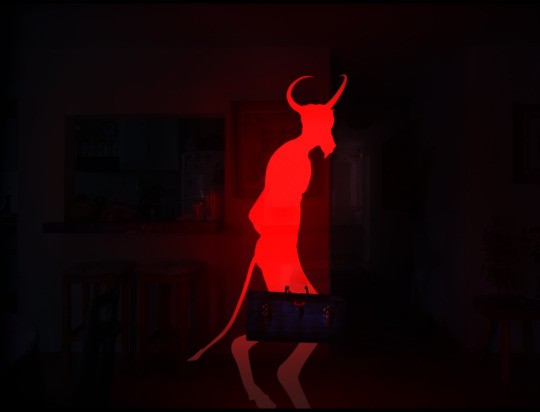
“Some metaphors score and some miss, but this is leap-of-faith cinema: the rewards entail some risks.”
#21 - The Revenant (2015) Dir. Alejandro G. Iñárritu

“Pushing both brutal realism and extravagant visual poetry to the edges of what one customarily finds in mainstream American filmmaking, director/co-writer Alejandro G. Inarritu, cinematographer Emmanuel Lubezki and a vast team of visual effects wizards have created a sensationally vivid and visceral portrait of human endurance under very nearly intolerable conditions.”
#20 - Her (2013) Dir. Spike Jonze
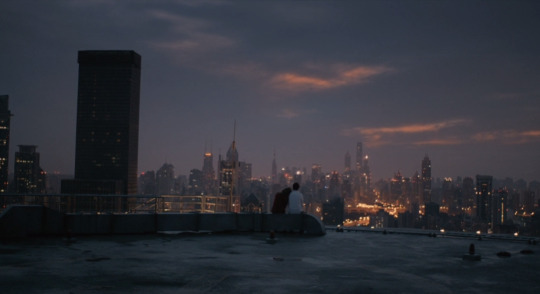
“What begins like an arrested adolescent dream soon blossoms into Jonze’s richest and most emotionally mature work to date, burrowing deep into the give and take of relationships, the dawning of middle-aged ennui, and that eternal dilemma shared by both man and machine: the struggle to know one’s own true self.”
#19 - Annihilation (2018) Dir. Alex Garland

“A shimmering example of what Hollywood sci-fi can achieve when the aim is high, Annihilation is a gripping, mystifying adventure and proof that a transportive experience is more rewarding than a story with clean-cut resolutions.”
#18 - The Neon Demon (2016) Dir. Nicolas Winding Refn

“Spectacular, gross and delicious (so unsavory it’s almost sweet), the film is more proof of Refn’s mastery of his trash aesthetic and more fun than anything this indulgent and empty-headed has any right to be.”
#17 - Waves (2019) DIr. Trey Edward Shults

“Propelled by color, energy, electronic music and a quartet of career-making performances, here is that rare sort of cinematic achievement that innovates at every turn, while teaching audiences how to make intuitive sense of the way it pushes the medium.”
#16 - Mother! (2017) Dir. Darren Aronofsky
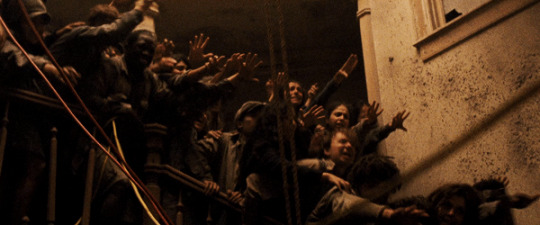
“Mother! is something truly magnificent, the kind of visceral trash-arthouse experience that comes along very rarely, means as much or as little as you decide it does, and spits you out into the daylight dazzled, queasy, delirious, and knock-kneed as a newborn calf.”
#15 - Melancholia (2011) Dir. Lars Von Trier

“The vision is as hateful as it is hate-filled, but the fusion of form and content is so perfect that it borders on the sublime. Melancholia is a remarkable mood piece with visuals to die for (excuse the pun), and a performance from Dunst that runs the color spectrum of emotions.”
#14 - Song to Song (2017) Dir. Terrence Malick
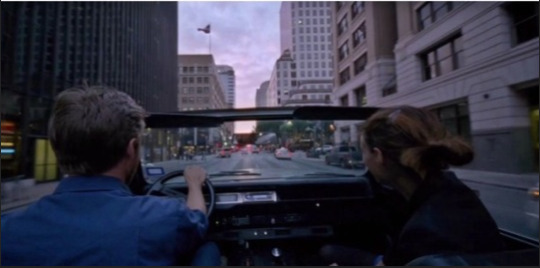
“Any number of sequences find feelings both externalized and hidden intermingling within the same shot, continuing in a subsequent image that carries the impression, the feeling, without replicating the exact tenor of what has just been seen. They exist simultaneously as certain backstories and what motivations they may inspire delicately unfold. Malick has found a way to translate how a familiar song has the ability to transport you back to a particular time and conjure a specific set of emotions. Whatever he’s been exploring over the past few years pays off here.”
#13 - If Beale Street Could Talk (2018) Dir. Barry Jenkins
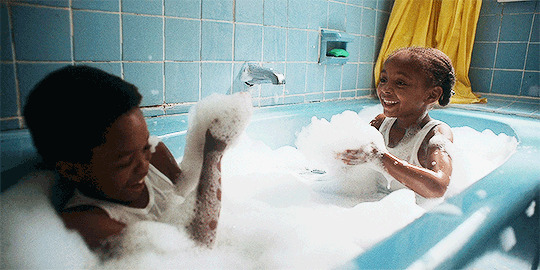
“What Jenkins gets most right—what astonishes me the most about this film—is Baldwin’s vast affection for the broad varieties of black life. It’s one of the signature lessons of Baldwin’s work that blackness contains multitudes. In some ways Beale feels less like a movie than a well-staged, meticulously shot play; a period piece that floats beyond its specific time and place and into the realm of allegory.”
#12 - Samsara (2012) Dir. Ron Fricke

“Simply put, Samsara tells the story of our world, but onscreen, it is so much more than that. A darker and more ambitious meditation on impermanence, Samsara relies on blunt force and unforgettable imagery, overcoming the hazy logic of Fricke's editing to earn your awe.”
#11 - It’s Such a Beautiful Day (2012) Dir. Don Hertzfeldt
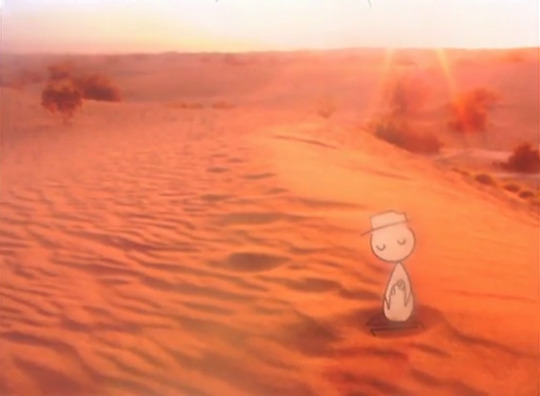
“A highly original and utterly enthralling film that touches on staggeringly expansive themes - more typically expected in the work of master auteur and persistent award-winner Terrence Malick, than from animations. An existential flipbook and a heartbreaking black joke: stickmen have never looked so alive.”
#10 - Upstream Color (2013) Dir. Shane Carruth
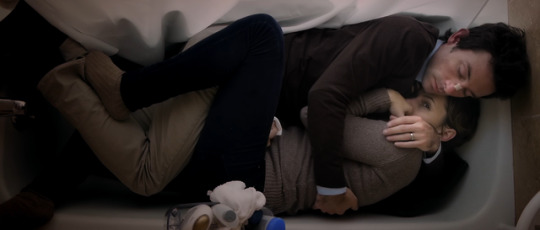
“You may not be able to figure it out, but that's part of the point of this sensually-directed, sensory-laden experiential (and experimental) piece of art that washes over you like a sonorous bath of beguiling visuals, ambient sounds and corporeal textures.”
#9 - Hereditary (2018) Dir. Ari Aster
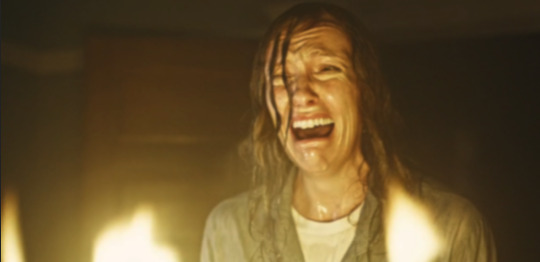
“It’s a supremely effective gauntlet of supernatural horror that’s also, at blackened heart, a grueling domestic drama about how trauma, resentment, and guilt can seep into the roots of a family tree, rotting it from the inside out.”
#8 - Spring Breakers (2013) Dir. Harmony Korine

“Spring Breakers seems to be holding a funhouse mirror up to the face of youth-driven pop culture, leaving us uncertain whether to laugh, recoil in horror, or marvel at its strange beauty. Full credit to Korine, who sustains this act of creative vandalism right through to the finish. Spring Breakers unfolds as a fever dream of teenage kicks, a high-concept heist movie with mescal in the fuel tank.”
#7 - The Master (2012) Dir. Paul Thomas Anderson
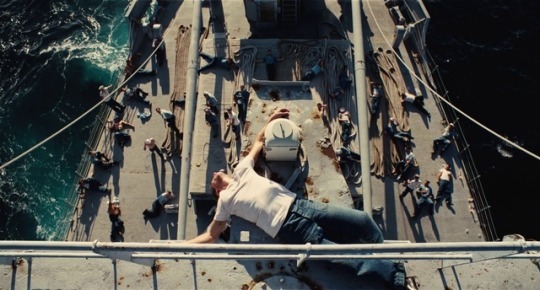
“Two things stand out: the extraordinary command of cinematic technique, which alone is nearly enough to keep a connoisseur on the edge of his seat the entire time, and the tremendous portrayals by Joaquin Phoenix and Philip Seymour Hoffman of two entirely antithetical men. Written, directed, acted, shot, edited and scored with a bracing vibrancy that restores your faith in film as an art form, The Master is nirvana for movie lovers. Anderson mixes sounds and images into a dark, dazzling music that is all his own.”
#6 - Interstellar (2014) Dir. Christopher Nolan
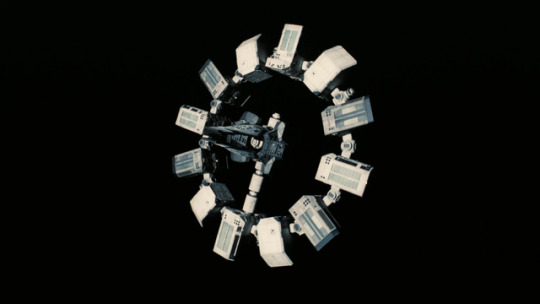
“It’s a bold, beautiful cosmic adventure story with a touch of the surreal and the dreamlike, and yet it always feels grounded in its own deadly serious reality. An exhilarating slalom through the wormholes of Christopher Nolan’s vast imagination that is at once a science-geek fever dream and a formidable consideration of what makes us human.”
#5 - The Place Beyond the Pines (2013) Dir. Derek Cianfrance

“A brilliant, towering picture, The Place Beyond The Pines is a cinematic accomplishment of extraordinary grace and insight. The movie succeeds both as a high-stakes crime thriller as well as a far quieter and empathetic study of angry, solitary men proves that Cianfrance has a penchant for bold storytelling and an eye for performances to carry it through.”
#4 - Black Swan (2010) Dir. Darren Aronofsky
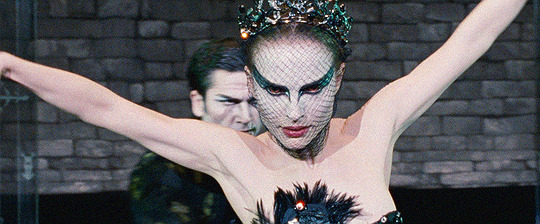
“A full-bore melodrama, told with passionate intensity, gloriously and darkly absurd. It centers on a performance by Natalie Portman that is nothing short of heroic. This is, no doubt about it, a tour de force, a work that fully lives up to its director's ambitions.”
#3 - Drive (2011) Dir. Nicolas Winding Refn
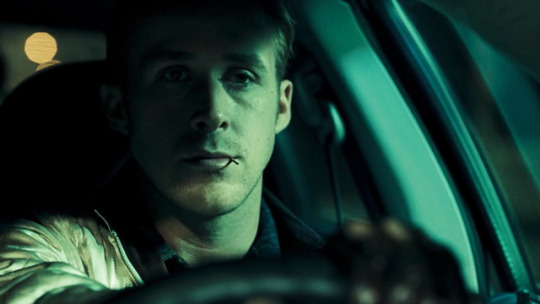
“From the beginning, it's clear this is not a standard-order action film. It takes its characters as seriously as its chases, shootouts, and fights. Drive dynamically merges a terrific film noir plot with a cool retro look. It's an unapologetically commercial picture that defies all the current trends in mainstream action filmmaking.”
#2 - Blue Valentine (2010) Dir. Derek Cianfrance
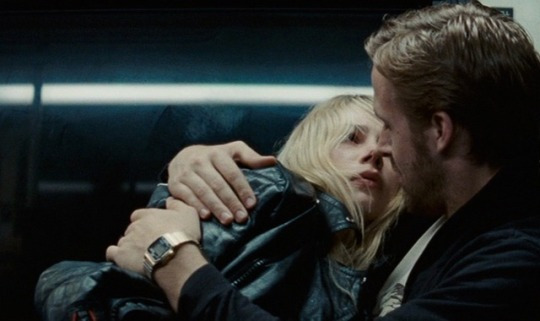
“Cianfrance and his actors, Michelle Williams and Ryan Gosling, have not made a cold or schematic film. They aim instead for raw emotional experience, one that's full of insight into the ways a relationship can go astray, but mostly feels like a slow-motion punch to the gut.”
#1 - The Tree of Life (2011) Dir. Terrence Malick
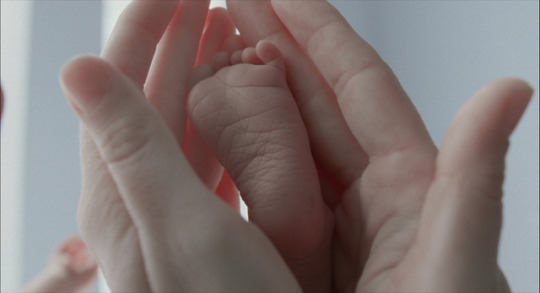
"The Tree of Life is a film of vast ambition and deep humility, attempting no less than to encompass all of existence and view it through the prism of a few infinitesimal lives. I wrote earlier about the many ways this film evoked my own memories of such time and place. About wide lawns. About a town that somehow, in memory, is always seen with a wide-angle lens. About houses that are never locked. About mothers looking out windows to check on their children. About the summer heat and ennui of church services, and the unpredictable theater of the dinner table, and the troubling sounds of an argument between parents, half-heard through an open window.”
#favorite films of the decade#best films of the decade#decade in review#favorite films#shame#steve mcqueen#green room#jeremy saulnier#a ghost story#david lowery#the lost of city#james gray#knight of cups#terrence malick#20th century women#mike mills#jackie#pablo lorraine#blade runner 2049#denis villeneuve#the lighthouse#robert eggers#ingrid goes west#a hidden life#suspiria#luca guadagnino#call me by your name#american honey#andrea arnold#post tenebras lux
128 notes
·
View notes
Text
My Top 40 Movies of the Decade
***just my opinion***this list is not set in stone either***
1. 12 Years A Slave (2013)
What Steve McQueen has managed to do with this movie in nothing short of the best thing art is capable of. He takes the horror of humanity and turns it into a heart shattering tale of the best of humanity. A film that could have sunk easily among the brutality it contains, instead soars with Solomon’s survival. It is one of the most life-affirming, uplifting works of art I’ve ever seen. It makes you cry, it makes you shout, it makes you cheer, it makes you breathless. In short, all the things movies are best at. Not just a definitive movie, but a definitive work of art.
2. The Act of Killing (2012)
This has my vote for the best documentary film of all time. What begins as a transfixing profile of the mass murders responsible for the 1965 Indonesian genocide quickly transforms into a Brechtian nightmare as director Joshua Oppenheimer somehow convinces these men to stage scenes for a fake movie reenacting their crimes. As the film progresses you can hardly believe what you’re witnessing. Horrifying, yet you can’t look away. Oppenheimer holds your attention for every second. What’s captured for film here is truly unique, ground-breaking, soul shaking. A statement about the banality of evil as profound as Ardent’s essays.
3. The Tree of Life (2011)
Malick has reached his final form here. An organic art form, pure cinema, visual poetry, whatever you want to call it. Nothing but a movie could be this. The images he crafts here are as close to a religious experience as I’ve ever had watching a movie, and probably ever will. In exploring childhood memories, Malick’s style perfectly matches his subject manner. He use of ellipsis and fluidity mirrors the way memories flash through our heads. It is as if we are witnessing memory directly, unfiltered. This movie will move you in ways you didn’t know a movie could.
4. The Social Network (2010)
That Facebook movie? Hell yeah that facebook movie. What Fincher and Sorkin have managed to do is take what could be a standard biopic, or dull tech movie, and made it into an epic tale of betrayal, greed, friendship, coming of age, and identity. Ross and Reznor’s score pulses, as does the dialogue. This movie starts the instant you press play and it doesn’t let you catch your breath for one second until the very end. Endlessly quotable, perfected acted. A masterclass.
5. The Grand Budapest Hotel (2014)
What can I say about this movie? Every shot is perfect. Every joke, beat, pan, zoom. Well, I guess I’ll say this. This movie disarms with its charm, its facade. But at its heart is a wrenching tale of loss, nostalgia, and the fleeting nature of everything, especially those we love. A jewel of a film. Anderson makes sure you’re cozy and then pulls the rug out from under you, and suddenly you’re crying.
6. The Master (2012)
Career best performances from Joaquin Phoenix and Phillip Seymour Hoffman. Lushly shot. Greenwood delivers another ground breaking score. PTA has made an aimless film about aimless characters that nevertheless is riveting. At the end, you may not know exactly how far you’ve progressed, but you’re sure glad you went on the journey.
7. Drive (2011)
This is not an action movie. It’s a love story. The now famous dream pop soundtrack. Ryan Gosling doing so much with so little. Refn’s breathtaking cinematography. Diluted dreams. Crushed hopes. Silent gazes, filled with more emotion than dialogue could ever render.
8. The Revenant (2015)
An achievement of pure cinematic insanity. I still have no idea how they got some of these shots. A brutal, thrilling story of survival among nature’s cruelty. Inarritu’s camera is like magic in this film, uncovering the previously thought not possible.
9. La La Land (2016)
A reinvention of a genre that somehow manages to have its cake and eat it too: a nostalgia trip that also subverts expectations. Right up there next to Singin’ in the Rain, in my book at least. How on earth was that only Chazelle’s second ever movie?
10. The Lighthouse (2019)
TELL ME YE FOND O ME LOBSTER! WHYD YA SPILL YOUR BEANS? IF I HAD A STEAK ID FUCK IT. That about sums it up.
11. Parasite (2019)
Bong Joon Ho has made a beautifully twisted psychological thriller that is also hilarious, touching, and a lasting commentary on class and social mobility.
12. The Florida Project (2017)
Baker’s approach of setting this story from the viewpoint of children makes it a glorious romp through a world of innocence as well as tragedy, and also makes it all the more emotionally impactful.
13. Inside Llewyn Davis (2013)
It’s all about the cat. Alongside the Coen’s mastery of dialogue and the side character, as well as the beautiful folk music, this film acts as a deeply moving portrayal of depression, and how sometimes we are our own worst enemy.
14. Moonlight (2016)
Expertly crafted. Expertly acted. Expertly shot. A gorgeously rendered coming of age story. I’m not really the person who should speak of its importance. I’ll just say: it is. Very. A movie that will stun you.
15. Mad Max: Fury Road (2015)
Practical! Effects! Yeah, that really is Tom Hardy swinging fifty feet off the ground on a pole as explosions go off behind him. A feminist, post-apocalypse, road trip movie brought to you by the director of Happy Feet and Babe 2. What more could you want?
16. Moonrise Kingdom (2012)
A wonderful celebration of childhood and of fantasy. Anderson crafts a world you want to return to again and again. Anyone else get jump scared when they realized Lucas Hedges was in this???
17. Arrival (2016)
I love Denis Villeneuve’s films for so many reasons. The most important I think is that he balances entertainment and artistic depth so well. Like all great scifi Arrival is not really about aliens, it’s about us.
18. Inception (2010)
A film that runs on all cyclinders. Smart, funny, jaw dropping, just plain fun. Nolan manages to build some surprisingly moving moments as well.
19. Gone Girl (2014)
Ah Fincher and his twists. Rosemund Pike at the top of her game. Ross and Reznor return with another gripping score. Around the narrative, Fincher creates a fascinating portrayal of the media and marriage, one with endless twists and turns. You never quite know where it’s headed.
20. Sicario (2015)
A second thing I love about Dennis Villeneuve: he does point of view characters better than anyone else.
21. Enemy (2014)
A third thing I love about Dennis Villeneuve: he plays with genre and narrative structure unlike anyone else working right now.
22. Incendies (2010)
A fourth thing I love about Denis Villeneuve: he’s given us some of the best female lead characters this decade.
23. Blade Runner 2049 (2017)
A fifth thing I love about Denis Villeneuve: he somehow managed make a Blade Runner sequel work. Here’s hoping for Dune.
24. The Look of Silence (2014)
The companion film of The Act of Killing. Oppenheimer does it again, this time focusing more on the victims of the genocide. Groundbreaking cinema.
25. Shame (2011)
Slow clap for Michael Fassbender. Slow clap for Carey Mulligan. Slow clap for Steven Mcqueen.
26. Hereditary (2018)
Using horror to examine mental illness and family trauma. Aster has made a new classic of genre, taking it to new heights.
27. Under The Skin (2014)
How to make a movie about an alien descended onto earth in order to capture men and engulf them in her weird black room of goo? Make a very alienation movie. Chilling. Otherworldly. Haunting.
28. Son of Saul (2015)
In making any holocaust film there’s always the risk of feeling exploitative. Nemes’s radical camera work, focusing almost entirely on the main character’s face in close up leaves this concern in the dust. The horrors enter only at the corners of the frame, while humanity is firmly centered the whole time. An important film everyone should see.
29. Whiplash (2014)
As visceral and heart pounding as the solos performed, the film as a whole is a perfectly made portrait of a obsession.
30. Amour (2012)
Haneke takes his unforgiving approach and lays bare a topic with incredible emotional depth. The result is deeply moving without ever being sentimental. I’m hard pressed to find another film about old age that is this poignant.
31. Birdman (2014)
A whirlwind of a film. A high wire act. The long takes turn it into something more akin to a play. A pretty damn good one at that.
32. Once Upon A Time In Anatolia (2011)
What’s Chekhov doing in the 21st Century? He’s in Turkey. He name is Nuri Ceylan.
33. The Favourite (2018)
Lanthimos turns down his style and turns up his humor. The result is the best of both worlds: a dark, twisted tale of power and a hilarious parody of monarchy and British costume drama.
34. Phantom Thread (2018)
PTA delivers again. What could easily have been another tired tale of the obsessive artist and the woman behind him is instead a fairy tale-ish ensnaring of two people’s ineffable pull towards each other.
35. A Hidden Life (2019)
Still fresh in my mind. Malick’s late style is given the backbone it needed in the form of a relevant tale of resistance and struggle. A meditative, prayer-like film about the power of belief.
36. Prisoners (2013)
A sixth thing I love about Denis Villeneuve: his movies have layers, but only if you look. Otherwise, the ride is pretty great as well.
37. Manchester By The Sea (2016)
A masterclass in doing less with more.
38. Foxcatcher (2014)
Bennett Miller does biopics unlike anyone else. That is to say, maybe better than anyone else working today.
39. The Witch (2015)
Eggers’s first foray into historical New England horror. A chilling commentary on the evils of puritanism.
40. The Kid With A Bike (2011)
The Dardenne brothers managed to make a gut-wrenching tale of childhood, masculinity, abandonment, the power of empathy, belonging, and redemption in 84 minutes. Here’s a suggestion. Watch this movie. Then watch it again. A better use of the same amount of time it takes to sit through The Irishman. Oh wait, no you still have 30 minutes left over.
21 notes
·
View notes
Link
In preparing for both the GDC Animation Bootcamp (Monday, February 27th at Moscone Center) and the Animation Exchange (Tuesday, February 28th live on Twitch) a handful of the presenters and organizers wanted to reflect and discuss on the state of animation for games.
The participants in this email exchange are:
Lana Bachynski - animator at Blizzard Entertainment
Gwen Frey - co-founder of The Molasses Flood
Dan Lowe - senior technical animator at EA Visceral
Jalil Sadool - CEO/co-founder at Steamroller Studios
Mike Jungbluth - lead animator at Deep Silver Volition
[more detailed bios for everyone are at the end of the piece.]
---------------------------
Mike Jungbluth: With this being the fifth year of the animation bootcamp, I've been thinking a lot lately on where the state of game animation is. Before the bootcamp, there wasn't really a place that I felt like game animators were sharing their process and knowledge. Most talks at conferences felt largely film or cinematic based, and less about interactivity. And now that we have a place to specifically share all aspects of the animation process, and more talks exist in the public showing how to bring a character to life, I wanted to reflect as a group on things.
First off, I'm interested if you believe the same perception and/or role of game animation persists across the industry as it did 5 years ago.
---------------------------
Lana Bachynski: Thanks for starting us off, Mike!
I think that the role of animation has largely remained the same -- ultimately we're serving the game play; telegraphing to the players what's hitting and how hard (though obviously with greater and greater fidelity). However, I think the perception of animation has changed a lot -- largely due to the communities that surround us.
Even in my relatively short time in the industry, I've seen animation go from little more than a game play necessity with MAYBE a fun animation if you have downtime ("as long as it's moving, it's good enough"), to a serious want driven by player's desires to identify with a character, and, in turn, express themselves through playing the game. (Creating and implementing something fun, badass, and character driven). 5 years ago, I think it was enough that you looked cool, but now, I think many folks want to be able to connect with their various avatars on more than just an armour-set.
---------------------------
Dan Lowe: If we're talking about the perception of other developers looking in on animation, I think that's really different for each studio. Like Lana said, the role of animation and the high level goals haven't really changed all that much, but for some studios the last 5 years has seen this adoption of new tools that make it much easier for animations to build their own systems, and I think that's definitely changed the dynamic between animators, programmers and designers.
Inside the animation community, one of the big changes I've seen is that there actually is a community now. I remember a few years back, talking to some graphics programmer friends and being kind of jealous of how vibrant their community was (and still is). It seemed like everybody knew everybody else, and it was almost every week that someone was posting a new paper about some new approach for anti-aliasing, or skin shading, or whatever else, and it didn't really feel like that was there for animators. There were venues for discussion like 11 Second Club, or Polycount, but it didn't really feel like there was one central place you could go, at least that I was aware of, where all the other top industry animators were discussing the medium. Really it's been social media, especially Twitter, and the community that's risen around the Animation Bootcamp that's changed a lot of that.
---------------------------
Jalil Sadool: I guess I like to call it ‘Animation in the Game industry’ rather than ‘Game Animation’. The craft of Animation itself is pretty much the same whether it is in the film industry or game industry. That being said, what differ are the limitations, guidelines and intent of each medium, resulting in different approach and workflows. The biggest change I’ve noticed in the last decade has been the obvious exponential growth of quality of animation in the game industry, which in turn has brought a shift in the perception of the entire animation industry. Feature Animation used to be the holy grail of animation. As an animator, being part of a Disney, Pixar or Dreamworks film used to be the ultimate goal, but the Game industry has rapidly changed that perception. Nowadays animators can choose from a wider range of exciting studios where animation is as highly regarded. In the last few years, we’ve seen In-game animation, cut-scenes and cinematics that can rival any Visual Effects production or Feature Animated film. With the more easily accessible game engines and animation tools, I think the amount of high level animation work in the game industry will keep rising for years to come.
---------------------------
Dan Lowe: It's interesting to hear what you say about feature animation being the ultimate goal for animators, Jalil. Definitely I've met a lot of game animators who think that way, and some that were quite candid about how games were just a stepping stone for them to move "up" to features, but for me it's never really something I've been interested in. Of course, my jaw's on the floor when I'm watching a Pixar, Disney or Dreamworks movie: The quality of the animation work is just... beyond incredible, but for me it's in service of a different set of goals, and as you say, it's working with very different constraints. Although game animation is obviously a lot rougher around the edges, ultimately we're creating remote controlled people, and I think if we look at it as systems of animation, it can be just as awe-inspiring.
That said, with you saying how the quality of animation in games is now becoming more highly regarded, do you think there was a specific moment or a specific game in recent years that you really think tipped the balance, or that you think would have made the people on the features side really stop and take notice? That extends to everyone: Was there a game or a moment in the last few years that you felt was a real significant step forward for game animation?
---------------------------
Gwen Frey: Dan wrote, "Was there a game or a moment in the last few years that you felt was a real significant step forward for game animation?"
I don't think there was a tipping point, I think the quality of game animation has consistently increased each year. I will say that the most important shift was when we stopped focusing on cut scenes and started focusing on making player-driven animation as impressive as possible. I think that set game narrative and game animation apart from other mediums. I think Naughty Dog has been a huge part of pushing player animation quality up year over year. More recently I think Inside really set the bar for technical animation and responsive AI.
Building on what others have said - I think there was a community for animators a decade ago, however animators in video games weren't really considered animators. If an animator left a job working in feature film to work in video games that was seen as a step down career-wise. I can definitely see why this was the case! In film the animator tells the team what they need and the team makes it happen. The animator is the end user. However, in video games animators usually work to help realize the design of the game. We are providing a service to to the designers and the team rather than being the end user. To a lot of traditional animators this looks unappealing. Imagine telling a film animator the following: "Animate the player hands reloading this weapon. This weapon needs to feel responsive so the player has to reload it in .4 seconds. Also, keep the hands in roughly the bottom of the screen so that you aren't blocking the player's view and keep the shoulders way off the screen in case the gamer has a wide resolution monitor." That sounds like a lot of constraints! However, there is artistry in making something that is beautiful within constraints. Having a character that blends and reacts and feels alive no matter what the player does is an incredible achievement to be a part of.
Also there is artistry in being the first to break convention or alter constraints. You'll find yourself thinking "Okay, so the gun has to be responsive, but does the reload have to be .4 seconds. Can I come up with a way to set up the blend tree so that I have more time? Can I start the reload right at the end of the firing animation to save a fraction of a second. Hmmm..."
---------------------------
Mike Jungbluth: I think VR is opening a lot of eyes for more traditional animators about the challenges of interactive and realtime constraints for character animation. But in a space closer to film than games, with the ability to offload some of the constraints on to the participant.
Touching back on Gwen's point about film animators being the end user vs game animators being more of a service department, I think that extends past animators and to actors and script writers as well. I've had a number of conversations in which the idea of empowering the player to change or impact the narrative removes the purpose of their craft. When their approach has revolved entirely around their controlled authorship of the creation, allowing the player into the experience is akin to letting members of the audience jump on the stage during a performance. And overcoming that mindset can be a hard one to even want to embrace or indulge.
But seeing film focused creators talking about the struggle to overcome many of the issues we are aware of and have found solutions to, has been a great moment of getting to reverse knowledge share across mediums.
My biggest desire with the democratization of knowledge sharing has been wanting to get past the how, so we can focus more and more on the what. Once we no longer struggle to get the character to just move convincingly on the screen and openly share when a better method exists, we can all dive into their performance and personality. And that is the end goal for animation, bringing to life a character that feels unique and alive. More than the sum of their parts. Which I think we are starting to get a lot closer to now for all the reasons we have been laying out.
---------------------------
Lana Bachynski: Jalil wrote, "I guess I like to call it 'Animation in the Game industry' rather than 'Game Animation'. The craft of Animation itself is pretty much the same whether it is in the film industry or game industry. ... Feature Animation used to be the holy grail of animation. As an animator, being part of a Disney, Pixar, or Dreamworks film used to be the ultimate goal, but the Game industry has rapidly changed that perception.”
And Gwen wrote, "If an animator left a job working in feature film to work in video games that was seen as a step down career-wise."
I feel like I need to call back to these, because this is a monumental shift in perception.
It feels particularly important for me – especially coming from a film animator turned game-dev. While I was studying, the thought of 'Game Animation' was beyond even the notion of 'inferior career choice' and into the realm of 'worthy of ridicule'. I remember telling people I wanted to animate for Blizzard (circa 2008), and I was literally laughed out of the school computer lab to calls of "Wait… you want to make GAME art?!" Obviously this is just one, tiny, sad violin, but from my perspective, it wasn't until these outlets (i.e. Animation Bootcamp, and now the Animation Exchange) started presenting robust, technical breakdowns, and inspiring examples of our craft that people really started paying attention.
Compared to any one, perfectly art-directed frame from a film, it is easy to overlook what happens in real time, but showcasing the Animation in Games in a standalone setting seems to been doing a lot of heavy lifting in regards to changing people's minds about this sphere of the industry.
Dan wrote, "That extends to everyone: Was there a game or a moment in the last few years that you felt was a real significant step forward for game animation?"
Gwen wrote, "I think Naughty Dog has been a huge part of pushing player animation quality up year over year.”
I'm not so sure if there has ever been a tipping point of any variety, but there have been pieces of animation that really, really stick to me. Calling out to what Gwen said, I have always been (to an almost embarrassing degree) an avid Naughty Dog fan, and it's largely due to the animation quality. I reference various pieces of Jak and Daxter on a regular basis (I think that double jump started me on the path to becoming an animator), though a more recent note, Uncharted 4's near-seamless transitions from cutscene to gameplay have had me floored. I may be wrong, because I rarely actually have time to play video games, but that was the first instance of it that I've ever seen of it, and it has been a personal desire of mine for as long as I can remember. With games getting more and more intertwined with these robust, immersive stories -- and the rise of VR on the horizon -- it seems as though the days of loading screens may have to fall behind us.
---------------------------
Dan Lowe: I totally agree about VR, Mike. It was really interesting at last years GDC listening to the Oculus Story group or ILM X-Lab saying things like, "We discovered it was really challenging to get players to look where we want them to look", and I wonder if it's giving credibility to the process of making games, exposing feature animators to challenges that in games we've had to face for a long time. And absolutely, I think VRs been a great melting pot where you now have these companies that are half film professionals and half games people. I'm really looking forward to what lessons come out of that.
On a similar thread, with what Lana was saying about the feature animation students looking down on game animation: The line that always made me sad when I'd hear it, was "game quality animation", by which the person saying it meant "bad quality animation", because it seemed to dismiss the skill involved in making animation systems.
I've always wanted to take a really talented feature animator, and sit them down in front of Unreal and say, "OK build me strafe nav system, and the character has to start and stop in 3 frames, and they need to be aim in all directions as they're moving, and it has to be built so you can swap out different weapon types, and you've got three weeks to do this." I'd be interested to see if going through that process would change the animator's perspective, but also genuinely interested to see if that animators skill would still translate. There's actually a real practical example of this going on right now, where you have Seith, who's an ex-Dreamworks animation director, making Ghost of a Tale. He's doing great work, and it's looking like it's going to be a beautiful game. I'd love to see more features animators giving games a shot.
It sounds from what Jalil is saying that the perspective has changed already, and if so that's really great. I wonder if that view comes from the advances in gameplay animation though, or if people are seeing work like the Overwatch character intros and Play Of The Game animations, which are amazing, but very similar to feature animation?
---------------------------
Lana Bachynski: Dan wrote, "I wonder if that view comes from the advances in gameplay animation though, or if people are seeing work like the Overwatch character intros and Play Of The Game animations, which are amazing, but very similar to feature animation?”
I could actually chalk this up to the depth of character we're starting to see in games, now. Yes, a lot of that can be found in the broad, hype moments (POTG, supplementary short films), and in part, it's obviously due to great writing (so many amazing characters emerging with real agency!), but I do like to think it could be owed (at least a little) to an animator's capacity to infuse character into even the smallest moments.
I remember during last year's bootcamps, Danielle Riendeau's MicroTalk was which animated moments stuck out at her from the perspective of a non-animator — and it was amazing! A lot of her favorite moments weren't big, badass boss fights — they were little moments: Lara Croft wringing out and tightening her ponytail after she comes out of the water (Rise of the Tomb Raider), Henry's hand touching the wood of the overhead stairs (Firewatch) — small, character moments, the kind you only get if you're liberated enough to focus on Mike's aforementioned 'what' instead of the 'how'.
Plus, I think what we're doing is pretty damn fun.
One of the most satisfying things about making animation for video games is getting to create something, then experience that thing over and over again in a myriad of different ways. Maybe I hate a particular animation more on days when I lose a Team Fight I should've won, but then maybe I see that hyper-rare walk variation I slipped in when I had an extra hour one day and it cheers me up again. I've never been able to watch a film 100 times, and on the 101st viewing see something entirely new. That's some of the beauty of animating for games, and it seems pretty enticing to me!
Dan wrote, "The line that always made me sad when I'd hear it, was "game quality animation", by which the person saying it meant "bad quality animation", because it seemed to dismiss the skill involved in making animation systems”
Jumping back again to this idea of perception, I think, perhaps, it might be wise to remember that - not too long ago - there weren't really 'game animators' so much as there were 'game developers'. Folks weren't just making beautiful little performances in player-controlled segments, they were writing the baseline and putting motion in between when they could (really focussed on that 'how'). Perhaps a big tipping point would simply be a time where animation became important enough to dedicate someone to the beautification of it full time? Correct me if I'm wrong, but even at smaller studios, it seems like folks have to wear far fewer hats nowadays.
---------------------------
Mike Jungbluth: Over the last decade, I have always been lucky enough to focus solely on animation asset creation, across a range of mid-tier to AAA studios. And I think the quality increase has come in better systems, even more than just better animation assets. Which means I would say I am actually wearing more hats now than before. Some of that is a natural part of becoming more senior and experienced, but in giving more ownership of implementing character movement and feel to animators, having a better understanding of some system level architecture in regards to high level design and programming needs has become more and more necessary. So before, where the multiple hats may have been between rigging, skinning and animating, I think a lot of mid size studios require animators to apply their knowledge to more areas than creating an animation in whatever software package you use. When I started at Volition, I didn't even open up motionbuilder or look at the rigs for the first 2 weeks, because I was focused on learning the implementation/graph tools. That is now half of the job for a lot of people. Or even more, as Gwen and Dan can attest to. The new skillset of technical animation that has less to do with software and more to do with realtime systems has exploded. Which means potentially more hats to wear, or even more specialized people to train/hire.
---------------------------
Gwen Frey: Dan wrote, It sounds from what Jalil is saying that the perspective has changed already, and if so that's really great. I wonder if that view comes from the advances in gameplay animation though, or if people are seeing work like the Overwatch character intros and Play Of The Game animations, which are amazing, but very similar to feature animation?
Building on what Dan and Lana said here:
I've found the animated shorts and the cinematic moments in Overwatch to be very powerful improvements to that game. It has long been understood in game art that you can paint a gorgeous, high-fidelity 2D character, and then have a lower poly 3D representation of that character running around in a game world, and fans will love it. People will project the highly-detailed concept art onto their game avatar and they will believe the in game art is more detailed than it actually is. I suspect the same thing is happening with Overwatch (and with LoL, WoW, etc). People see these highly cinematic moments and they project that extremely polished and detailed animation on to the characters in game. When you are actually playing Overwatch things are so frantic that you wouldn't notice an overly quick blend here and there anyways. I agree with Dan that the skills required to make an animated short, or an in-engine cinematic are very different than the skills one needs to make gameplay animation! But I'm also really glad we have those cinematic animators around. They add a lot to the experience!
---------------------------
Jalil Sadool: Gwen wrote, "I agree with Dan that the skills required to make an animated short, or an in-engine cinematic are very different than the skills one needs to make gameplay animation! But I'm also really glad we have those cinematic animators around. They add a lot to the experience!"
I think the skill of Animation itself is not different whether you are in game or film or cinematic. The limitations around it are what's different. An animator working in cinematics can absolutely join the in-game animation team or vise versa. There will obviously be a ramp up time to learn either the specific tools or the demands of the game or cinematic, but the craft of animation itself is no different. That's why I'm not a big fan of branding animators as 'game animators' or 'film animators'. Many animators move from games to film... They learn how to use the tools in a few weeks, learn the demands of the film itself and apply their animation skills to the job. Same goes for film animators who join the game industry. My point is we train to become animators without the extra label. Then we tweak and adapt that skill to the project we are working on ... regardless of it being a game or a film. ---------------------------
Mike Jungbluth: That really depends on the game. For games pushing more towards realism, where straight mocap can be leveraged more and more, that is happening for sure. For games that are pushing more towards stylized timings and posing, that is still a long ways off. I think if animators focus on the final character performance as their end goal, no matter how the process adapts or changes to new technology, animators will always be relevant and needed, based on our knowledge of emotion and physicality.
I think this also leads to a good closing question for everyone (if you want to also answer this while answering Dan's question, since we are hitting the last day for this discussion). What do you see the next 5 years looking like? Between this group we span indie, to AAA and gameplay to cinematics. What are areas you are hoping get better or easier? What aspects do you still see struggling for years to come?
---------------------------
Dan Lowe: It's a difficult one to pin down because the role of an animator is different at every studio. If you think of a cinematics animator at one end of a scale and an animation programmer at the other, there are all these shades of grey in between, and exactly how technical a gameplay animator needs to be, is different for each studio. At Visceral our gameplay animators build the animations to spec, and then hand them off to technical animators to integrate into the engine, so it wouldn't take much at all for an animator who had never worked in games to adjust to working there. But there are lots of other teams that I've worked on where animators are expected to be very technical.
I think in a lot of ways you can sum it up with "Would I hire this person for this role?" and that's a very situational, very nuanced question. I'd like to think that most studios would place the ability to animate well above all else, and would allow a non-technical animator time to learn, but I've also seen great animators not get hired for gameplay roles because they didn't have any technical experience. The basics of the technical side should really be no more complex than learning Max or Maya, so in part it was frustrating to see, but on the other hand, I've seen studios who have tried migrating their animators over to building their own state graphs and it's been disastrous. Some animators took to it easily, but a lot were resistant, and some just couldn't get their heads around it. There's an argument to be made about whether the design of the tools, or the training methods were appropriate, but I can at least understand how some teams get concerns when they're hiring for gameplay roles and they see that the animator has never worked in games before.
What's interesting, and challenging for some people going forward, is that it's only getting more and more technical. Part of my reason for gradually moving over the course of my career from purely animation to a more technical role, is that I can see a point in the future where animators may not longer be required, at least not in the sense of sitting down and keyframing animations. In the last year or so this is starting to feel more and more imminent.
I don't know if you guys agree with that assessment? If so is it something you're concerned about?
---------------------------
Lana Bachynski: Dan wrote, " I can see a point in the future where animators may not longer be required, at least not in the sense of sitting down and keyframing animations. In the last year or so this is starting to feel more and more imminent. I don't know if you guys agree with that assessment? If so is it something you're concerned about?"
I agree with this sentiment from a production standpoint, but not as a blanket statement. I think it will be possible. I think it will be economical! I think it could eventually look as good as hand-keyed -- but I don't think that it leaves me worried.
When Toy Story was released, everyone was up in arms about how traditional animation was dying and we'll never see it again, but here Laika is kicking ass -- with an even LESS conventional traditional medium -- how many years later? Imagining that hand-keyed animation in video games will eventually disappear entirely sounds, to me, like the same sort of 'the sky is falling' attitude. Even if it disappears from AAA, the indie scene is BURSTING with talent, and I believe there will always be at least some sort of 'artisanal game studios', hand-keying like there's no tomorrow. Even with all the CURRENT advancements that exist, I'm at a big studio, and I'm still hand-keying all day every day!
---------------------------
Dan Lowe: At last year's Animation Bootcamp, I said at the end of my talk that I didn't think animators should be worried about automation; that it was just going to make things faster and easier for us. Since then I've read a bunch about Deep Learning and it scares the hell out of me. While there are certainly some tasks that are much easier to automate than others, the terrifying thing about neural networks is that they're dealing with problems the same way that your brain does, and that means that ultimately no cognitive task is sacred. We all worked hard to become artists, but there was a process happening there. We receive inputs, neurons fire, myelination improves connections along axions, and now we know how to make an appealing, emotive character.
It won't happen overnight, but the path to full automation is becoming more and more clear, and the rate of advancement that's going on in AI is crazy right now.
You do raise a good point Lana, which is to what degree does an audience or a customer care about the method by which something was made, versus just the end result. Say if someone hand carves a beautiful table, and makes it from the wood of a special tree that they've been growing since they were a child, but then a machine on a production line makes the exact same table with such precision that they're completely indiscernible. To what degree does the person who buys that table, care about the story behind how it was made. For some people I'm sure they care a lot, maybe for others they just want a beautiful table.
Of course, people won't stop animating, the big question for us, is whether companies will still pay us to do it. Does the provenance of an individual piece of content like an animation in a game, matter to a gamer, as much as how the overall mechanics, story, and world comes together. When you're making these huge simulations, the quality and volume of the content matters to an audience. If a machine can give you an Overwatch Play of the Game animation, that has the same level of performance, the same level of appeal, but it's unique every time, would gamers rather have that, or the version of the game that they know was made by a dedicated team of people?
But that's the long term. I think the next 5 years for keyframing won't change all that much. It's a well understood art that's been on a steady trajectory for a long time. I would say that even in stylized games, you could see some realistic elements come into it, like materials, cloth, physics, etc. Like Pixar and Disney have still moved to physically based rendering for their lighting and materials, and I think if World of Warcraft looked like the Blizzard Cinematics, there would almost certainly be a market for it.
For realistic games I think there'll be huge changes. I can see a big focus on developing different methods for capturing the real world. Photogrammetry, material scanning, facial scanning systems, capturing not just skeletal motion but surface deformation, muscles and clothing: This is already in the pipe, and I'd expect it's only going to increase going forwards. Along with that I can see a big focus on new methods for processing that data: Pipelines that take this information and automatically process it and put it directly into the engine, or systems like Motion Matching that can work using raw data. Then as I say, Deep Learning systems that will use motion capture as training data, then generate motion on the fly, rather than storing animation in memory. There are people that are looking at that problem right now.
I hate to end on a downer, but if automation does change things, unfortunately I can see less jobs for animators, especially on the mocap side. On the other hand, animators could become more like directors; working with actors to define the motion on the stage, and working with engineers to define how that motion is processed
---------------------------
Jalil Sadool: Now I am depressed... ;)
Once, a programmer said he will replace me with a small Mel script.... At the time I laughed, but after reading Dan's projections, that comment doesn't seem that funny anymore.
I do think that there's still quite a while before Key-Frame animators are fully replaced everywhere. We all remember when CG started taking over and Disney closed down the Florida branch.
We all thought that 2D would disappear within a decade, but that hasn't really happened. Yes, Disney as we knew it, the traditional side, isn't around anymore, but others have picked up the torch. Film studios from abroad, Netflix, Youtube and TV have all kept 2D alive and healthy. I think the landscape for animators will keep changing, and it will be up to us to adapt the skills we've learned to future technologies….. at least until Skynet takes over.
From a small production house point of view, I think the next 5 years are going to be fruitful yet challenging.
We've noticed a sudden increase in outsourcing animation work from AAA game studios.
Outsourcing has been more common in the VFX industry but in the last few years, Feature Animation studios and AAA Game Studios have been increasingly outsourcing animation work. With the level of animation rising every year, it has become primordial for game companies to seek and compete for the best animators out there. It's not always easy to ramp up a solid animation team and then keep them busy for a long period of time. Having a trusted outsource animation team has become a practical and financially viable option. The challenge is of course maintaining the high level of animation that is required by most AAA Game Studios. As long as the focus is on quality and efficiency, I think smaller animation houses have a healthy future.
---------------------------
Lana Bachynski: Dan wrote, "If a machine can give you an Overwatch Play of the Game animation, that has the same level of performance, the same level of appeal, but it's unique every time, would gamers rather have that, or the version of the game that they know was made by a dedicated team of people?"
I think people absolutely do care where it's coming from. Not everyone, mind you, there will be many production teams that just want to get the work done, and I'm sure they will make some really badass stuff. However, like any dedicated tradesman, I think folks do care to see a master at their craft, possibly just out of novelty, but likely out of respect. Yeah, I can buy a sharp knife that was generated in a batch alongside a thousand other sharp knives that came out of that metal chomping machine. It will cut my food and look pretty on a magnetic strip in my kitchen...but if I just SAW some guy put in the raw, physical time and effort to heat and hammer and polish, I feel like he's earned my patronage. That is the knife I'd want in my kitchen, if only for the story.
In regards to animation, consider things like Ryan Woodward's incredible conte work -- a large team could have put together that animation in a fraction of the time with 100% of the quality, but knowing it was one man, in his basement, with some reference chorography and his own internal narrative...that makes it special in one of those strange, human ways, and I think people can't help but gravitate toward that.
Mike wrote, "What do you see the next 5 years looking like? Between this group we span indie, to AAA and gameplay to cinematics. What are areas you are hoping get better or easier? What aspects do you still see struggling for years to come?"
As for the next five years, I'm not sure if I'm well versed enough to make any sort of technically specific kinds of predictions, but I do believe it is the rise of the small studio! Think about this last year's Game Developer's Choice awards and Indie Choice awards -- there was a pretty darn remarkable degree of overlap, there, and I can only imagine the lines between indie and AAA will continue to blur.
---------------------------
Dan Lowe is a senior technical animator with over 10 years experience in animation systems design, gameplay animation and motion capture. He is currently working on an as yet untitled Star Wars project at Visceral Games. Previously Dan worked at Ubisoft Montreal on titles such as Far Cry 3, Watch_Dogs and Far Cry Primal. Prior to that, he worked at Bizarre Creations, where he helped ship Blur, James Bond: Blood Stone and The Club. As a technical animator, Dan works with Visceral's gameplay team to design and implement systems in ANT, EA's proprietary animation tool. He also works to develop new tools for animators, with a focus on automation. Dan has a BA in Games Design from Teesside University.
Gwen Frey has been working as an animator or technical animator in games for over a decade. Most recently she co-founded a small indie studio and launched The Flame in The Flood as a biz dev personality and the sole animator. Her other credits include Bioshock Infinite, The Bioshock Infinite DLCs, Marvel Heroes Online, and numerous consulting credits for other games. Her previous GDC talks are available online, and she has a popular YouTube channel for technical animation tips and tricks.
Jalil Sadool is currently the CEO/co-founder at Steamroller Studios as well as co-founder of CGTarian Online Animation School. He has worked in the film and game industry as a professional animator for over a decade. He was lead animator on 'Rise of the Planet of the Apes' at Weta Digital as well as 'How to Train Your Dragon 2' at Dreamworks Animation. His resume also includes 'Avatar',' Rise of the Guardians', 'The Chronicles of Narnia', Rise of the Tomb Raider and Deus Ex: Mankind Divided.
Lana Bachynski is an animator at Blizzard Entertainment for Heroes of the Storm, co-creator of Tea Time Animation, and yoyo aficionado. Find her anywhere @Latienie. [NOTE: Lana Bachynski's opinions are her own, and do not reflect any official standing of Blizzard Entertainment.]
Mike Jungbluth is the lead animator at Volition on Agents of Mayhem. Past games include Elder Scrolls Online, Middle Earth: Shadow of Mordor, Call of Duty: Black Ops, and Singularity. He has talked at GDC and several other conferences about using art, design and tech to drive a character's performance, his writing has been featured on Gamasutra & GameIndustry.biz and he is a co-creator of the GDC Animation Bootcamp, Animation Exchange and AnimState network. More than anything, he believes in the need for open sharing and democratization of knowledge.
0 notes